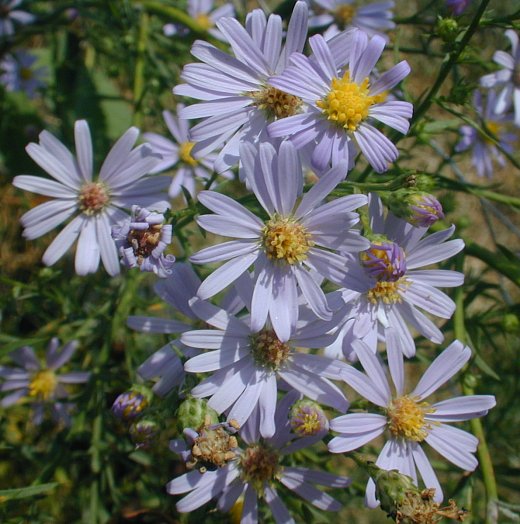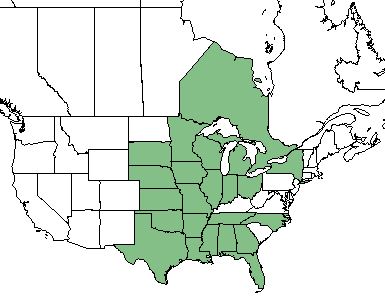Difference between revisions of "Symphyotrichum oolentangiense"
(→Ecology) |
|||
| Line 38: | Line 38: | ||
<!--===Seed bank and germination===--> | <!--===Seed bank and germination===--> | ||
<!--===Fire ecology===--> <!--Fire tolerance, fire dependence, adaptive fire responses--> | <!--===Fire ecology===--> <!--Fire tolerance, fire dependence, adaptive fire responses--> | ||
| − | + | ||
| + | ===Pollination=== | ||
| + | This species is known to attract butterflies and many species of native bees.<ref name="Ladybird"/> | ||
<!--===Use by animals===--> <!--Herbivory, granivory, insect hosting, etc.--> | <!--===Use by animals===--> <!--Herbivory, granivory, insect hosting, etc.--> | ||
<!--==Diseases and parasites==--> | <!--==Diseases and parasites==--> | ||
Revision as of 14:18, 12 January 2018
| Symphyotrichum oolentangiense | |
|---|---|

| |
| Photo by | |
| Scientific classification | |
| Kingdom: | Plantae |
| Division: | Magnoliophyta - Flowering plants |
| Class: | Magnoliopsida - Dicots |
| Order: | Asterales |
| Family: | Asteraceae |
| Genus: | Symphotrichum |
| Species: | S. oolentagiense |
| Binomial name | |
| Symphyotrichum oolentangiense (Riddell) G.L. Nesom | |

| |
| Natural range of Symphyotrichum oolentangiense from USDA NRCS Plants Database. | |
Common Name(s): azure aster;[1] skyblue aster[2]
Contents
Taxonomic Notes
Synonym(s): Aster oolentangiensis; A. azureus var. azures[1]
Varieties: S. oolentangiense var. laevicaule; S. oolentangiense var. oolentangiense[1]
Description
Symphyotrichum oolentangiense is a dioecious perennial[2][3] that grows as a 1-3 ft (0.30-0.91 m) forb/herb or subshrub.[2] It prefers mesic to dry soils and produces a bluish purplish flower with yellow center.[3]
Distribution
S. oolentangiense is found from New York to Minnesota and South Dakota, south to the Florida Panhandle and Texas, being absent in several states along the Atlantic coast.[1][2]
Ecology
Habitat
This species occurs in prairies and glades.[1]
Phenology
Flowering occurs from August through November.[1]
Pollination
This species is known to attract butterflies and many species of native bees.[3]
Conservation and Management
Cultivation and restoration
Photo Gallery
References and notes
- ↑ 1.0 1.1 1.2 1.3 1.4 1.5 Weakley AS (2015) Flora of the Southern and Mid-Atlantic States. Chapel Hill, NC: University of North Carolina Herbarium.
- ↑ 2.0 2.1 2.2 2.3 USDA NRCS (2016) The PLANTS Database (http://plants.usda.gov, 12 January 2018). National Plant Data Team, Greensboro, NC 27401-4901 USA.
- ↑ 3.0 3.1 3.2 Plant database: Symphyotrichum oolentangiense. (12 January 2018) Lady Bird Johnson Wildflower Center. URL: https://www.wildflower.org/plants/result.php?id_plant=SYOO